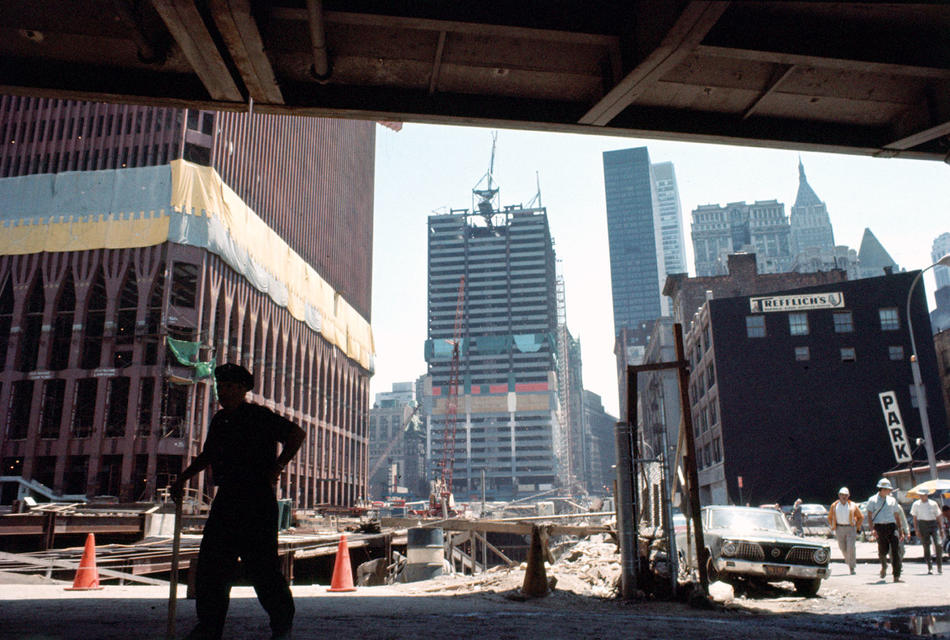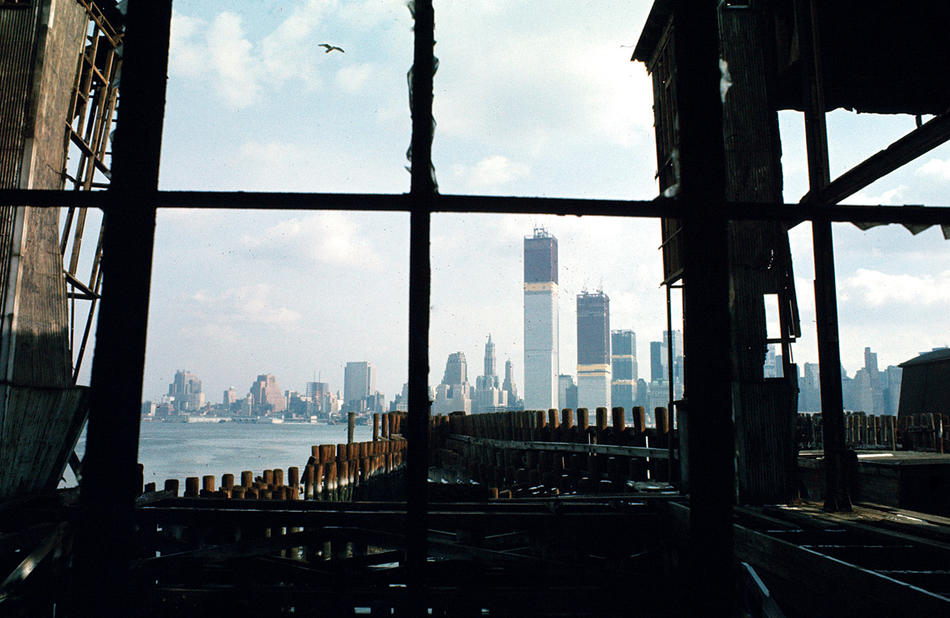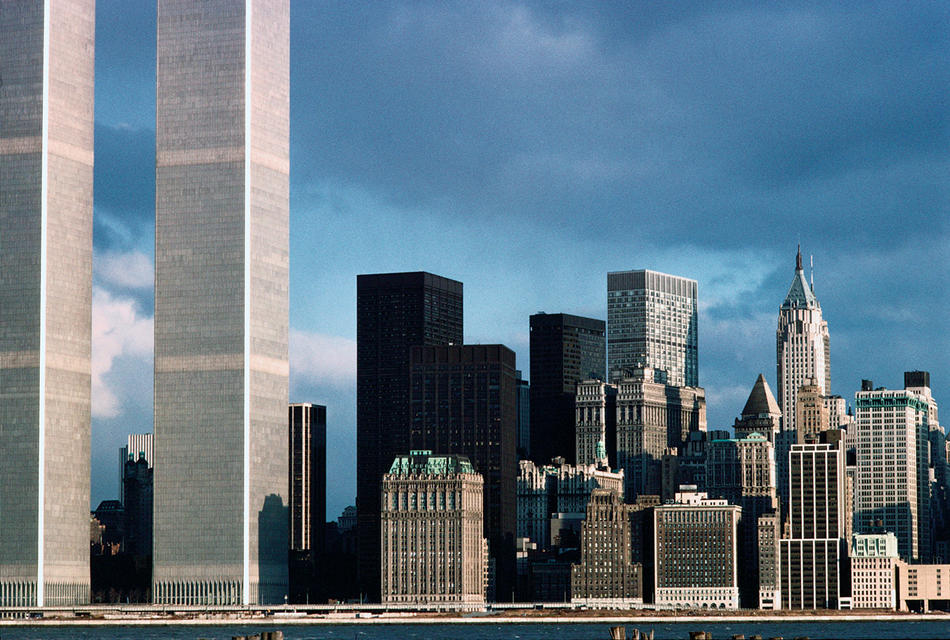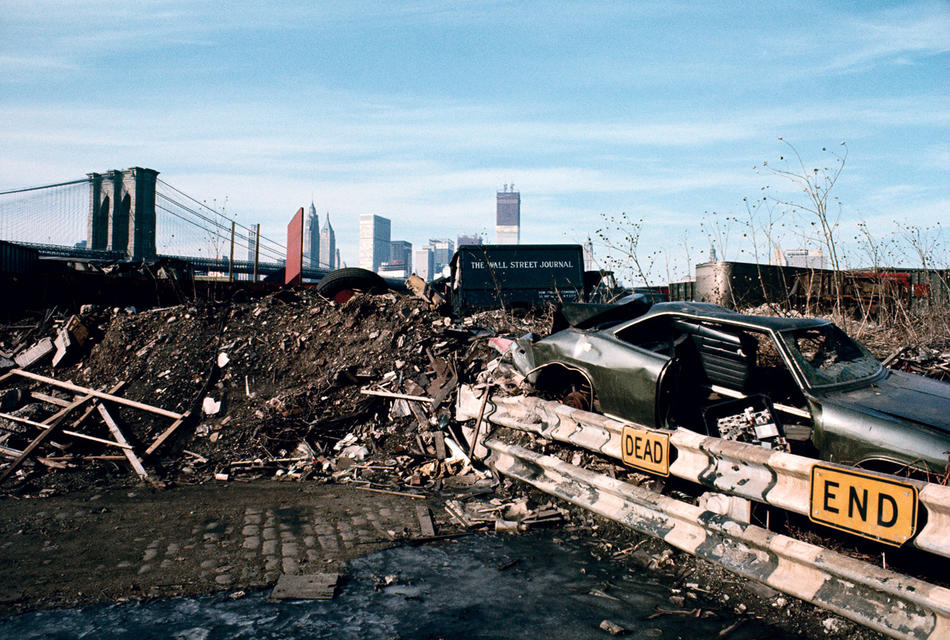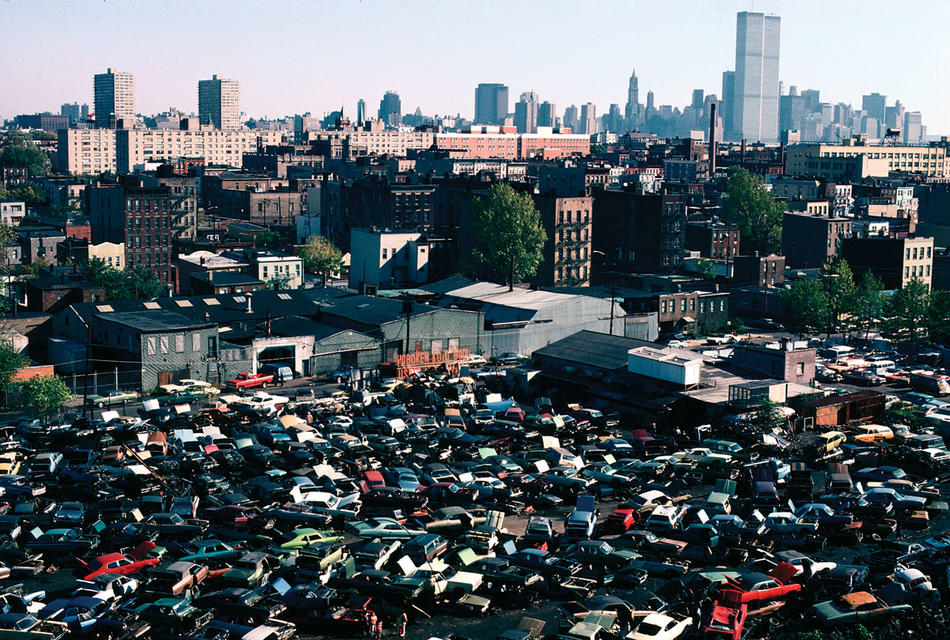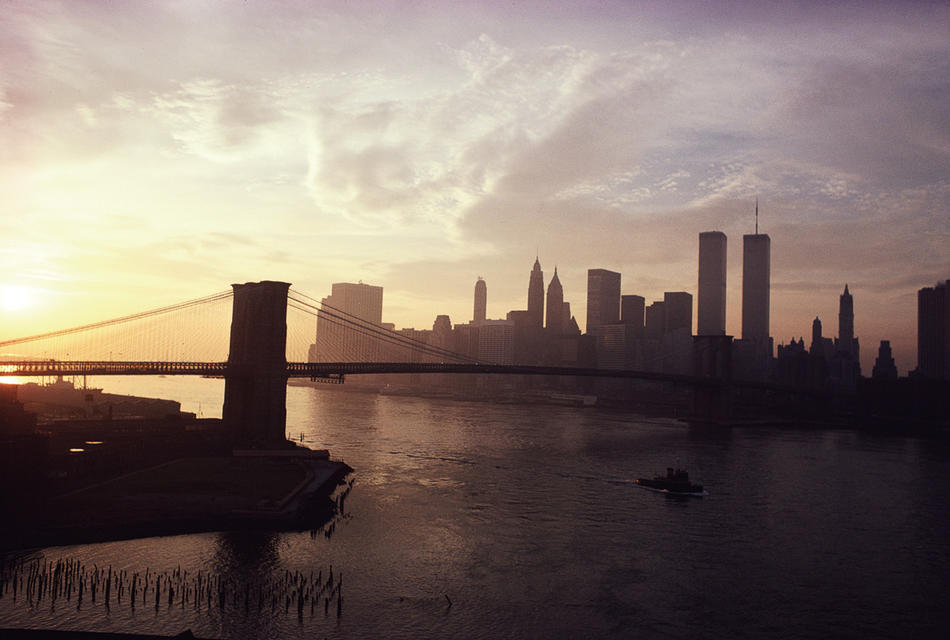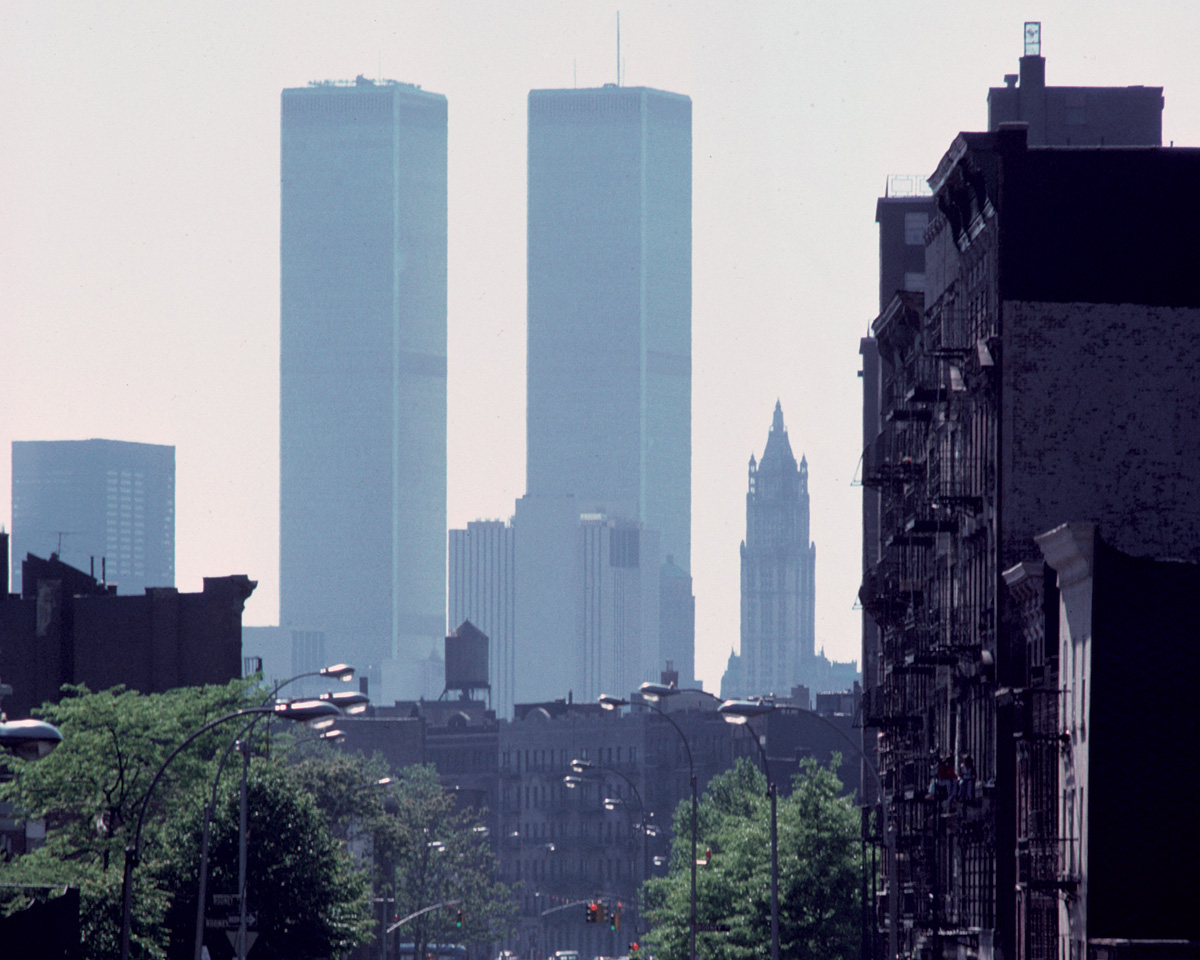
I rarely photograph something just once. If I take a picture of the Lower Manhattan skyline, I’ll go back to the same spot and photograph that stretch of the skyline year after year, almost by compulsion. The question for me is, What images will be needed to make a place and its evolution comprehensible?
I was immediately attracted to the Twin Towers in 1970 when they were being built: They were so big and so American. I was a recent arrival from a provincial town in Chile whose tiny population could easily have fit inside one of the towers. But I also disliked them.
As the structures rose to become the tallest buildings in the world, I regarded them as a wild expression of hubris, arrogance, and mistaken priorities in a troubled time. More than half a million Americans were fighting in Vietnam, and the ghettos of New York were crumbling, violent, and segregated. This shaped my early encounters with the towers, and I tried to convey my feelings by photographing them with homeless people in the foreground or in harsh sunlight, which turned the buildings into gleaming blades. I followed the construction closely, watching the heavy trucks bringing in steel or hauling away dirt amid the noise of jackhammers and clanging metal. But as I moved farther away to photograph the towers from the distant boroughs, they seemed to lose their solidity and become mysterious, alluring, and fantastic shapes hovering in the skyline. I liked to see them in the background of my photos rising above the waterways, vegetation, junkyards, expressways, subways, and houses that were my primary interest.
For nearly two decades, the Twin Towers alone dominated Lower Manhattan. Then, in the 1980s and ’90s, Battery Park City, erected on landfill extracted from the WTC site, came between them and the waterfront. Gradually, the entire southern end of the island became bounded by a massive assemblage of shiny buildings. They brought new colors to the skyline — greens and blues in their tinted glass facades, and reds and yellows from the brickwork — but their bulky form gradually obscured the wonderful slivers of sky between the towers.
I was unaware of the intensity of my interest in the towers until they were destroyed on 9/11. In the days after the attack, I photographed the family portraits of missing office workers posted around the city with urgent notes seeking information. Later, I spent several months gathering any of my images that included the World Trade Center. I returned to many of the sites from which I had photographed the towers to record the new look of the skyline. Over time, in cities as far away as Richmond, California, and Detroit, I documented street murals depicting the towers, as local residents sought to express their solidarity with the people of New York.
As I watched the towers being built, it seemed impossible that I would outlive them. Early on, I resented them and all that I thought they stood for. Eventually, I grew to see them as great human creations — such simple buildings that could turn into upright fields of amber in late afternoons in winter, and reflect passing clouds in the summer sky.
Now, I miss them.
